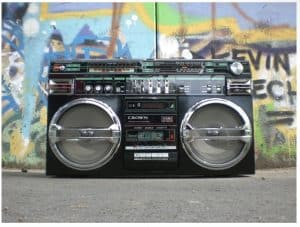We’re at a point where money doesn’t necessarily show up in the ways people grew up expecting. Big houses and fancy cars are still important, of course, but they’re not the only things people point to anymore. A lot of the real action is happening online, where someone’s crypto balance, rare digital collectibles, or the projects they invest in say just as much about their financial position as anything physical!

Cryptocurrencies Have Become a New Status Symbol
Crypto used to be a small corner of the internet that nobody really cared about, except a few people. It seemed like an experiment, something done by programmers and people fed up with traditional banks.
Now it’s everywhere! You can hear people in entirely different parts of the world discussing their wallets, new projects they’re following, or coins they’re stacking up for the long run.
The easiest place to see the change is in how people approach investing. Anyone active in the space pays close attention to the most popular crypto assets (Bitcoin, Ethereum, Solana, and a few others) to decide when to invest. Each one has its own purpose. Bitcoin is the slow, steady hold people trust during shaky markets. Ethereum is the engine powering most of the digital tools being built right now. Solana attracts people who want speed without spending a ton on fees.
People monitor price action, news events, and adoption stories and make calls based on what feels right for their goals. For some, it’s a long-term move. Others withdraw small amounts when the market heats up to fund real-life projects, such as studio time or travel. What makes this so attractive to so many people is its simplicity: you just need a phone and the willingness to learn as you go.
NFTs Are Finally Useful
At first, NFTs were just hype. But now, in 2025, they’re actually being used for things that make sense, especially in music. Artists are using NFTs to drop exclusive songs, offer limited access to exclusive merchandise, and even royalty splits.
That applies especially in hip-hop. People care for the rare and authentic. So when an artist drops a new track as an NFT, it’s not just content; it’s a pass to a private Discord, early gear, maybe even a say in what drops next. Newer rappers are getting in on the action as well, delivering visual art that connects to EPs, or giving festival benefits if you have their token.
Real-World Stuff Is Getting Tokenized
Tokenization is no longer just for digital art. People are breaking up physical things (studios, houses, even businesses) into digital bits. That way, it doesn’t take a million dollars to buy in. You only need a phone and some money.
Say a recording studio wants to get some cash. Instead of taking a loan, they split the ownership into 1000 tokens. Someone buys one for $100 and now gets a cut of the studio’s revenue.
Even old collectibles (rare sneakers, signed posters) are being tokenized. These used to sit in vaults or behind glass. Now they can be bought, sold, or traded internationally, while being linked to the real item.
DeFi Is the New Hustle
Decentralized finance, or DeFi, is turning the script. No banks, no gatekeepers. Just apps that allow you to borrow, lend, earn, or save directly from your phone.
Say you’ve got some crypto and you don’t want to sell it. You can lock it up as collateral and borrow stablecoins against it. That’s money that you can use now for studio time, production, whatever.
It’s not perfect. Gas fees can still eat up smaller transactions. But new tech is already reducing that, making it easier for regular people to get in without getting burned. The bottom line? You stay in control. No one freezes your account. No one asks for paperwork. You can move your money when you want, however you want.

